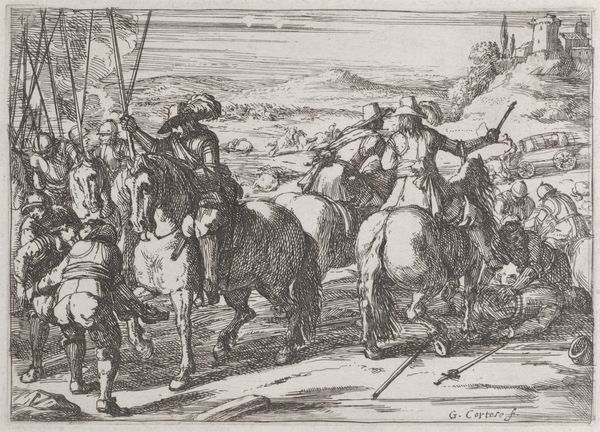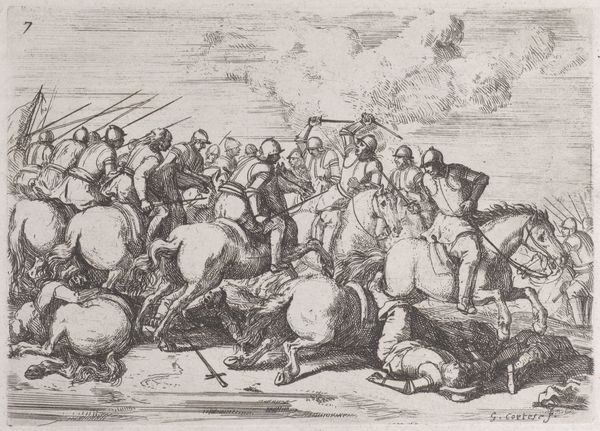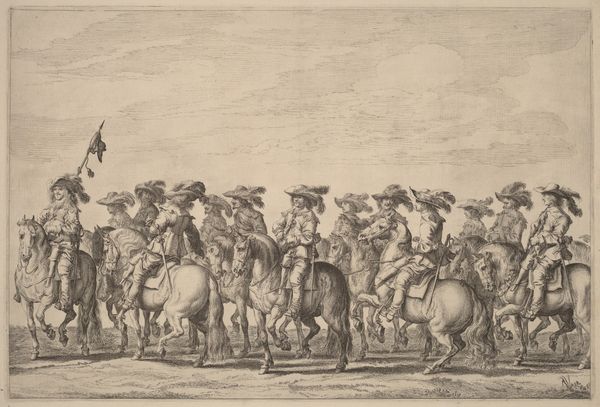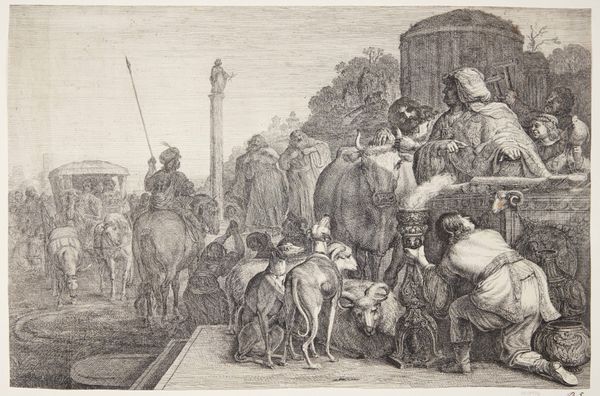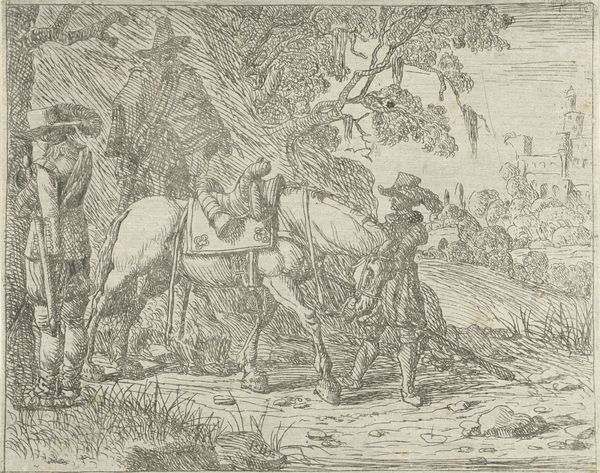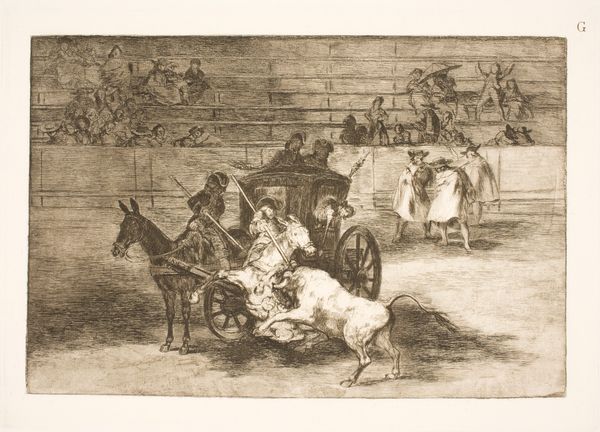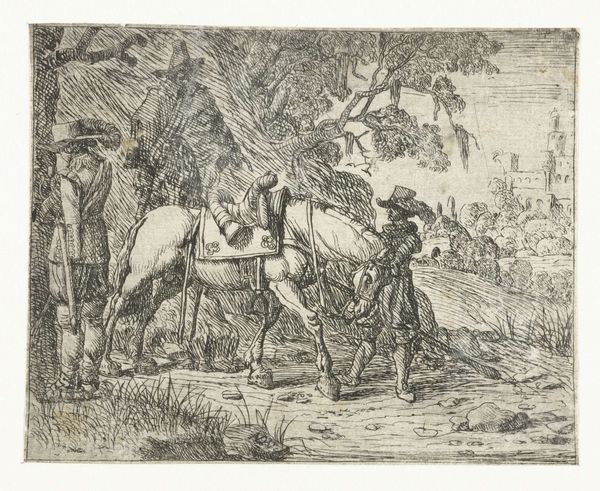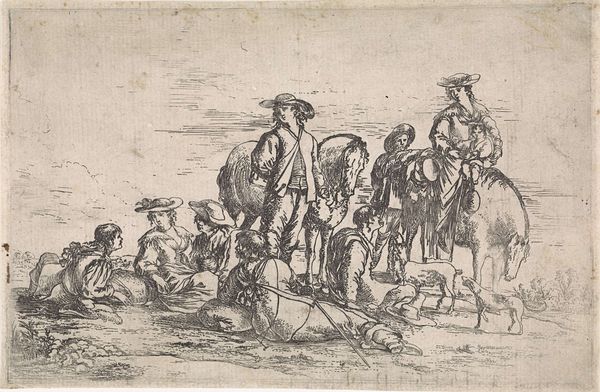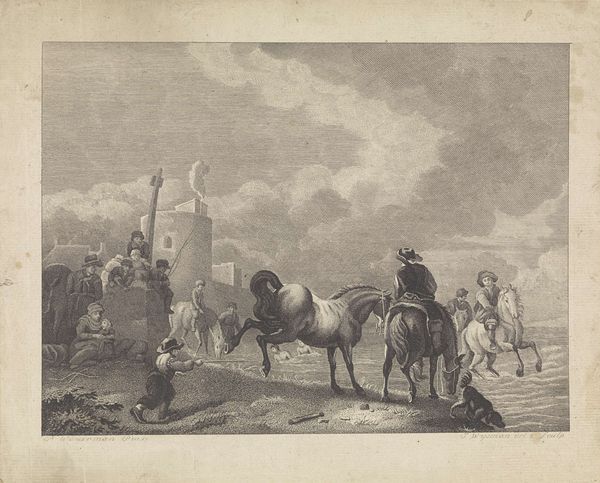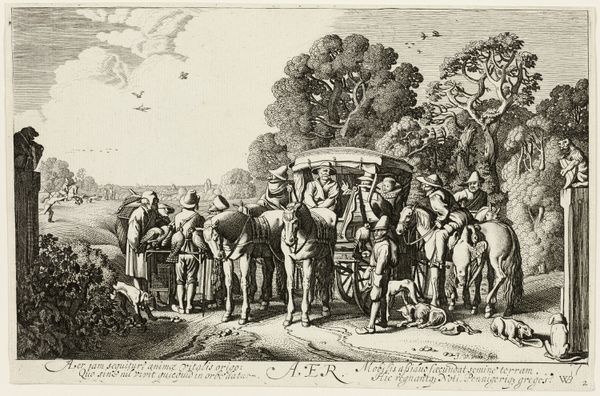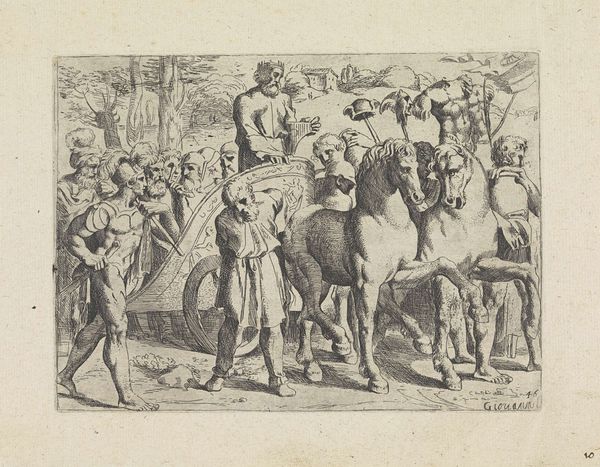
Intocht van Maria Henrietta Stuart, prinses van Oranje te Amsterdam (plaat 6) 1660 - 1662
0:00
0:00
print, engraving
#
narrative-art
#
baroque
# print
#
genre-painting
#
history-painting
#
engraving
Dimensions: height 318 mm, width 487 mm
Copyright: Rijks Museum: Open Domain
Curator: What a fascinating print! This is "The Entry of Mary Henrietta Stuart, Princess of Orange, into Amsterdam (plate 6)," made between 1660 and 1662 by Pieter Nolpe. It’s an engraving, currently held in the Rijksmuseum. Editor: My initial impression is one of rather stiff pageantry. The figures seem carefully arranged, and the overall tone feels very formal and considered. It’s quite a large procession captured in such detail by engraving. Curator: Indeed, engraving would have allowed for multiple reproductions, disseminating this image far and wide. Consider the sheer labor involved in creating such a detailed image, the lines painstakingly etched into the metal plate. It speaks volumes about the importance placed on this event to warrant such investment of skilled craft. The materials – the paper, the ink – were commodities in themselves, underscoring the social context. Editor: Precisely! The "event" as you call it – it's not just the arrival of a princess. It is also a piece of political theatre. This image, reproduced and circulated, helps construct and reinforce the image of the Dutch Republic, displaying wealth, power, and connections to European royalty. The placement of Mary Henrietta in the center of the carriage emphasizes her role. Curator: And that carriage itself! Look at the elaborate details, the upholstery, and even what appears to be heraldry on the side. Who made that carriage? How long did it take? What materials? The production values of that element alone must have been significant! Consider how the luxury, represented in the print, impacts on local manufacturing. Editor: It’s a fascinating document of a historical moment, shaping the perception of both the monarchy and the Dutch Republic for viewers then and now. Look at the composition, almost staged. The city sought to portray its power and cultural refinement, positioning itself in relationship to royal power. Curator: Seeing it like this, reframes the artwork as not merely historical, but the production value represents wealth distribution, a testament to human work under those conditions. It adds an economic dimension and encourages us to investigate material production behind this event. Editor: Absolutely, reflecting on it now, beyond its surface, the image unveils the interplay between politics, image-making, and power within that specific society. Curator: Agreed. Understanding this as not simply art, but as material product deeply intertwined with the socio-economic fabric offers a unique perspective on history and craftsmanship.
Comments
No comments
Be the first to comment and join the conversation on the ultimate creative platform.



